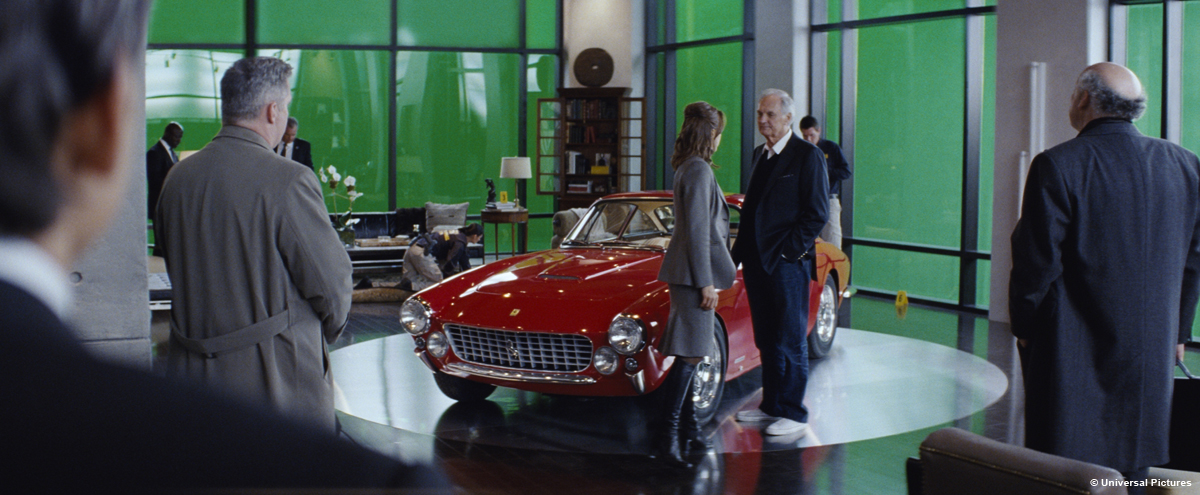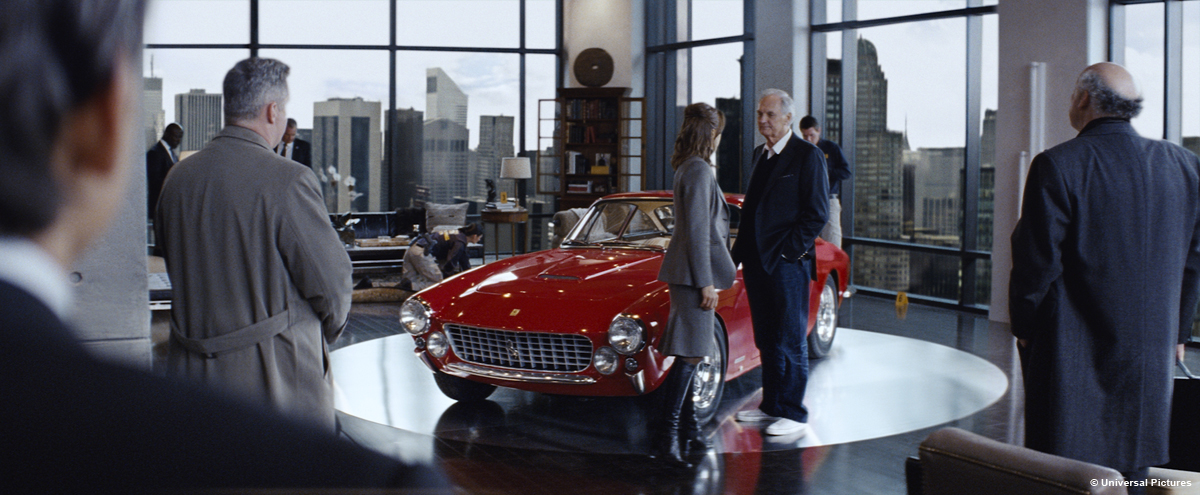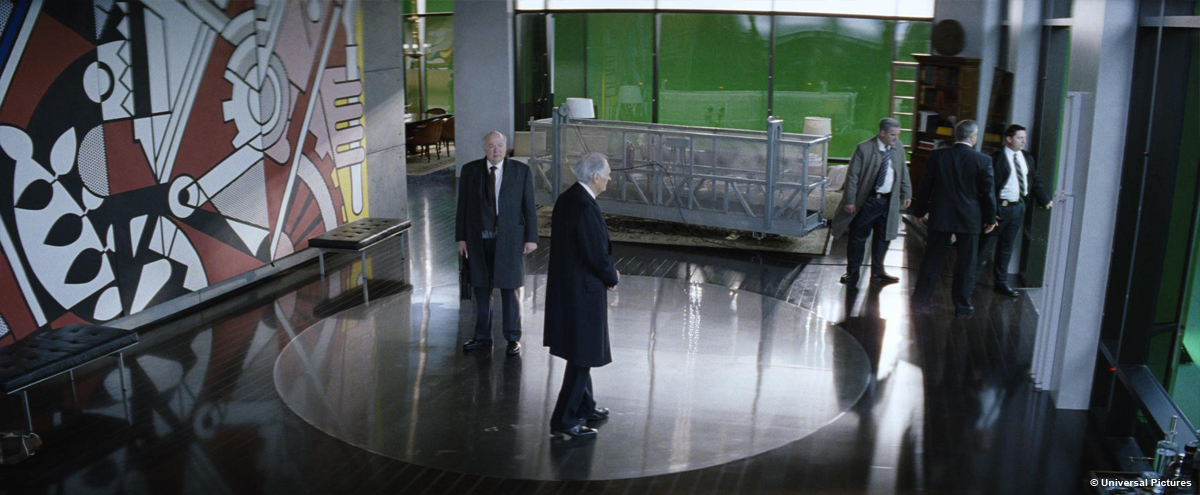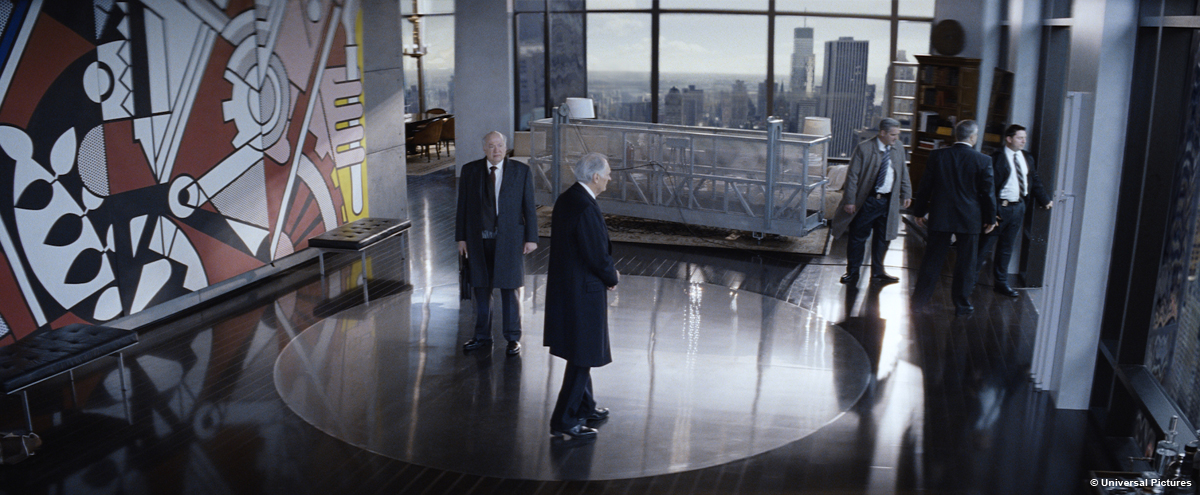After telling us about his work on ABDUCTION, Greg Liegey is back on The Art of VFX to explain his work on TOWER HEIST.
How was your collaboration with director Brett Ratner and Production VFX Supervisor Mark Russell?
Mark has a deep understanding of the process which helped us zero in on hero looks very quickly after the previews were delivered. He worked hard to keep all the vendors in sync with each other and get us consistent in terms of the big picture. That allowed to get into the fine-tuning stage earlier in the schedule.
Brett is a force of nature – he works on an instinctual level. He doesn’t over-analyze, he reacts. When the rest of us diverged into talk about technical aspects of the project, Brett would make sure to bring it all back to the visuals. He helped us concentrate on the story-telling.
What have you done on this show?
Method worked on six sequences and two stand-alone shots within Arthur Shaw’s apartment. We also completed 10 shots of digital alchemy (gold enhancement) using 2D color treatments or complete 3D replacements for gold objects in the scenes.
What was the size of the greenscreen for the penthouse?
The greenscreens wrapped around three sides of the apartment set and ran about 70 feet from end to end. They were about 26 feet tall and set back 50 feet from the glass.
 |
 |
Did you need to do some extensive roto work?
There were some angles where the actors ended up in front of multiple layers of apartment windows. The windows in those shots acted like ND filters which made the greenscreen very difficult to key cleanly. So for those, our roto team of David Marte and Alejandro Monzon did lots of articulate roto including reconstructing hair detail to a very convincing degree.
Many shots also required roto to limit areas of the reflective surfaces such as the floor where the greenscreen would have keyed cleanly even though the surface was opaque. We roto’d those areas & used the key to comp in an appropriate reflection.
The gold shots depended on solid roto for their success. The color correction shots had the objects roto’d from the scene and the 3D gold shots required articulate roto for the people holding the objects.
Which elements and assets did you received from production?
We received all of our NYC background tiles – HDRI stills and moving video footage – from Production. Other CG assets like the Ferrari model and the CG NYC were shared amongst the vendors.
Can you tell us more about the creation of this huge and well known background?
In the earliest days of the project, Peter Marin, the Method VFX supervisor who started the job in New York, and two senior composite artists, Aleksander Djordjevic and David Piombino, teamed up to construct a NYC skyline “bubble” in Nuke. The bubble was a sphere mapped with a stitched panorama of NYC skyline stills. Our matte painter, Amy Paskow, cleaned up the stitches and enhanced sky detail for particular views. Also, the BG plates were shot with trees in full summer greenery, but since the movie takes place around Thanksgiving, we replaced the trees with more autumnal versions. In order to align the perspective from inside the virtual apartment, we used the Google maps satellite view of Manhattan to place the bubble in relation to the apartment geometry.
After our preview delivery in May, we wanted to go for a more precise skyline placement. CG artist, Justin Maynard lightened-up a CG model of NYC so that it could be loaded into Nuke as a placement guide for the compositors. The CG NYC allowed for an exact placement of the BG bubble to match the view from the real-life penthouse apartment at the southwest corner of Central Park.
The Time Warner towers are huge reflective buildings which dominate the southwest views from Shaw’s apartment. We felt they needed special treatment for more realistic reflections and parallax. The panoramic still images of those buildings had frozen reflections and, as stills, would have no parallax on moving camera shots. Since all the apartment shots were shot with a Steadycam, we knew that it would pay off to add live reflections and some levels of parallax. We modeled the Time Warner towers and projected cleaned-up (reflection-less) textures onto that geometry. Then we positioned cards at the surfaces of the Time Warner faces to reflect the bubble environment. The reflected bubble on standalone geometry created a great sense of movement and life for what would have otherwise been much more dull and static.
As the show progressed, we placed several additional front row buildings on cards to further enhance feelings of parallax.
 |
 |
Due to the numbers of windows shots, did you create some automatic setups and scripts?
We created and maintained the BG bubble for use in all apartment shots. Eventually, we devised individual panoramas for each of the different scenes – varying the skies & lighting of the city for variation to match the different times of day for each sequence.
Did you share assets with other vendors?
We did share with Gravity since some of our sequences were so similar. They gave us their Ferrari model so we could use it as the basis for exterior reflections which we used to replace set reflections on the live-action Ferrari in our shots.
Can you tell us more about the gold enhancements shots?
Talking about the gold shots will be a spoiler for anyone who hasn’t seen the movie. At the finale of the film, the defrauded workers each get a piece of Shaw’s solid gold Ferrari. The props used for those shots had various gold treatments – some of which photographed better than others. Once the filmmakers saw the footage in an early DI session, they realized that the gold props weren’t as convincingly gold as they could be.
Starting with the simplest-solution-is-best mindset, we attempted 2D color corrections contained by articulate roto. For certain objects, that method worked very well – we gave the dull props a much more lustrous look.
Other objects proved to be tougher cases and didn’t respond as well to the 2D route. On those shots, involving the steering wheel and the grille, we resorted to a CG replacement of the props. The actual props were delivered to us so we could model them photogrammetrically. Justin Maynard modeled the pieces and matchmoved them to the actors’ action in the shots. Jaemin Lee textured and lit the pieces to match the plates. Flame artist Chris Hunt composited the objects into place – painstakingly adjusting the lighting balances and textural feel to give the objects the same reality as the props in the footage – only more golden…
What was the biggest challenge on this project and how did you achieve it?
The biggest challenge on the show was keeping the fine edge detail of the FG plates while compositing them onto bright-to-blown-out backgrounds. We also had to balance the window reflections to always give a sense that the glass surface was present.
Andy Jones wrote a tool for Nuke which helped us get smooth, clean keys for the greenscreens and still maintain a high level of fidelity to the original plates for extra-fine edge detail. Retaining that detail made the difference in selling the shots.
Was there a shot or a sequence that prevented you from sleep?
Aside from the number of shots & the time we had available (i.e., the standard problems!), David Piombino had a tricky shot featuring the tail-light of the Ferrari. The anisotropic reflections in the glass had to have the exact right refractions of the skyline bubble in order to be convincing…it was touch and go…but we all had faith that he could pull it off.
What do you keep from this experience?
This job was my first job at Method Studios after the merger with my former company CIS Hollywood. I was away from my home base in LA and working with a group at Method NY whom I had never met before. Luckily, in addition to being warm and welcoming, they are an excellent team of resourceful artists. We got the job done and had some fun along the way.
How long have you worked on this film?
Method Studios started work on the film in January 2011 and completed work in early October.
How many shots have you done?
Method Studios worked on 160+ shots, of which 138 are in the final edit.
What was the size of your team?
We had five artists working on CG and matchmove; five composite artists for the main show (and four-to-five more during crunch times); two roto artists; two paint artists; one matte painter and a production team of three.
What is your next project?
I moved directly onto Garry Marshall’s NEW YEAR’S EVE which is delivering now for an early December release.
A big thanks for your time.
// WANT TO KNOW MORE?
– Method Studios: Official website of Method Studios.
© Vincent Frei – The Art of VFX – 2011




